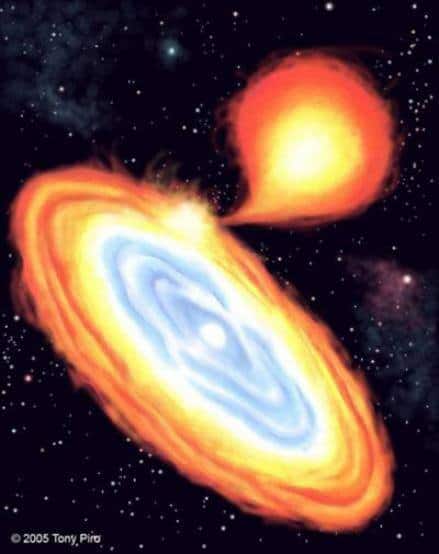In the beginning, or at least following the Big Bang more than 14 billion years ago, there was hydrogen, some helium and a little bit of lithium. A grand total of three elements.
Today, there are nearly 100 known naturally occurring elements, with hundreds of variants.
Figuring out how the universe went from three elements to 100 is the focus of new research being led by a Michigan State University physicist and funded by a five-year, $11.4 million grant from the National Science Foundation.
This work will be done, said Hendrik Schatz of MSU’s National Superconducting Cyclotron Laboratory, by going back in time, astronomically speaking, to interpret what he calls the “chemical fingerprints” of the elements created by celestial events such as supernovas.
In a process that continues today, stars create more and more complex elements, then explode as supernovas or gamma ray bursts, scattering the newly created elements into space for another generation of stars to use. Cycle after stellar cycle, stars become steadily richer in heavier and more complex elements.
“Chemical tracers found in very old stars form a ‘fossil’ record of chemical evolution and reveal how nature has, step by step, built up the elements that now form the basic building blocks of our world,” Schatz said. “We hope to find more of these chemical fossils through astronomical observations.”
These observations will then be interpreted by studying the same element-creating nuclear reactions in accelerator labs such as MSU’s NSCL, as well as similar labs at the University of Notre Dame, the Argonne National Laboratory and others. This becomes possible due to recent facility upgrades and the development of new experimental equipment.
The team will incorporate the experimental data into advanced computer models of the process of chemical evolution through a virtual galaxy that resembles our Milky Way.
The research also will delve a bit deeper into what are known as neutron stars – super dense stars that form when a large star explodes and its core collapses.
Again, by re-creating the conditions of a neutron star in the lab, the scientists hope to determine the characteristics of the stars’ matter, as well as study the violent explosions that occur on their surfaces and the merging of the stars into black holes.
“Our goal is to investigate the reactions that power the surface explosions, and to determine the nature of the exotic matter that makes up the interior of neutron stars,” Schatz said.
The research is being conducted through the Joint Institute for Nuclear Astrophysics Center for the Evolution of the Elements. The center is an NSF-funded Physics Frontiers Center that brings together experimentalists, theorists and observers in nuclear physics and astronomy to address two basic questions – the creation of the elements during the first billion years after the Big Bang, and the nature of dense nuclear matter that makes up the cores of neutron stars and their remnants.
Other partners in the project include Arizona State University, the University of Notre Dame, the University of Washington and 18 other institutions from six countries.


